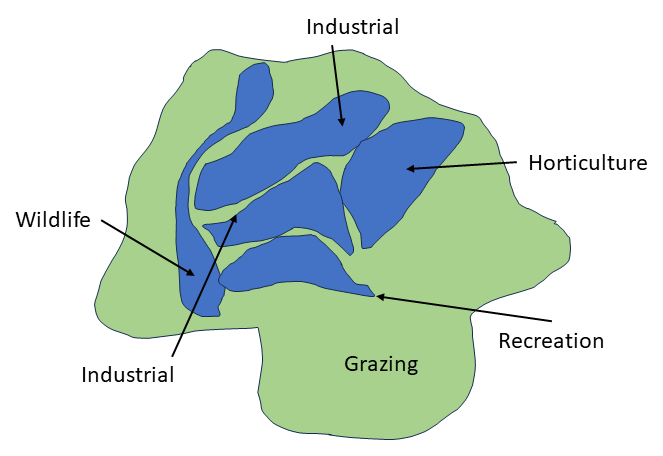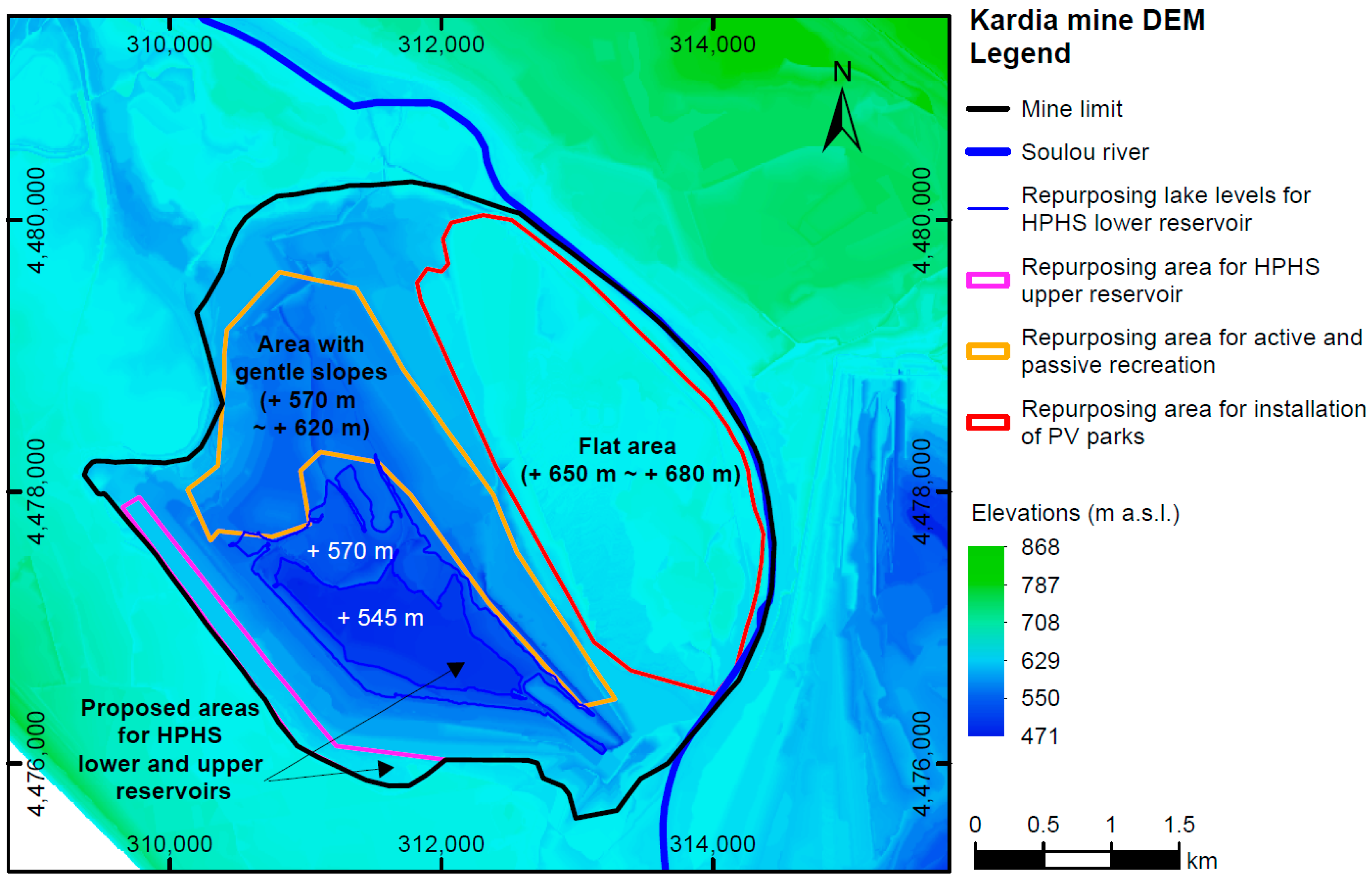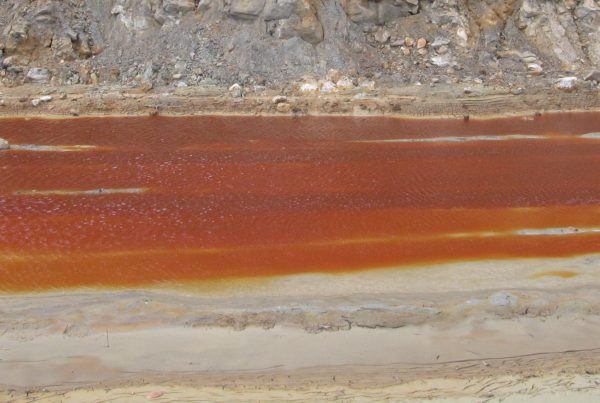 Defining a post mining land use (PMLU) is fundamental to developing an over-arching vision to pit lake closure planning. However, multiple PMLUs can present issues to all closure planning, including pit lakes.
Defining a post mining land use (PMLU) is fundamental to developing an over-arching vision to pit lake closure planning. However, multiple PMLUs can present issues to all closure planning, including pit lakes.
WHY MULTIPLE PMLUs?
There are many potential next uses that can be achieved with pit lakes; more so than for other legacy landforms arising from mining (McCullough et al. 2022). A diverse range of stakeholders can all reasonably hope for something from the pit lake that serves their needs. And a greater range of opportunities means that closure then provides a greater sum of benefit than a singular PMLU might present. It can therefore be tempting for companies to propose and actively work toward closure visions that encompass multiple PMLUs as a way of satisfying as many stakeholder expectations as possible.
For instance, the below design is based on a real-life concept where multiple PMLUs are proposed in the closure vision, by segregating the lake and surround lands into different “activity “ areas. Such closure designs are becoming increasingly common, especially where stakeholders have proposed varied and disparate interests in end uses such as recreation, economic development and wildlife habitat.
 Multiple post mining land uses (PMLUs) can create a much more complex closure management environment than single PMLUs.
Multiple post mining land uses (PMLUs) can create a much more complex closure management environment than single PMLUs.
However, PMLU development is intended to ensure the closed mine leaves a positive and sustainable benefit, rather than just meeting short-term legislative obligation or social expectations (APEC 2018). Stakeholders can often have expectations for end uses that are not able to be met with multiple PMLUs. A simpler closure vision of only a single, or PMLUs that accommodate other closure common objectives in a single closure vision may be more effective for the following reasons.
Complexity
There is recognition of the need for wider regional planning approaches in which PMLU selection considers regional and local planning strategies, the surrounding landscape and community views (Worden et al. 2024). However, a more complex project management will be required to manage all the multiple closure objectives around the site. Multiple PMLUs often means multiple stakeholders as more stakeholders are required for the company to engage across the multiple PMLUs. This means stakeholder engagement during closure development becomes more complex as a result, as well as multiple ownership transfers at relinquishment. Multiple PMLUs will also present multiple closure objectives, each with potentially different closure criteria to be achieved. Monitoring programs will have to ensure that all these criteria are monitored, analysed and reported for. As well as differing opportunities, different PMLUs will also present different risks that need to be assessed and then managed. All of these factors must be considered for permitting/approvals that then enables multiple PMLUs to go ahead.
Cost
There is also a danger in either proposing PMLUs which present excessive cost/liability to the company. For instance, although renewable pumped hydro might present as an ongoing energy supply option for the community; does a varying water level fit with a recreational end use and associated shoreline infrastructure? Multiple diverse PMLUs may also lead to more cost and effort to develop, requiring more technical expertise (in-house and third party required) and associated expenses. Potentially prolonged and more detailed monitoring and risk assessment, as well as infrastructure and overall project management will also increase closure costs that all must be factored into risk/cost estimates. There is increasingly pressure on state governments and other jurisdictions, as well as investors, to provide monies to meet such costly and complex developments (Eden Project ).
Contradictions
Multiple PMLUs can often be contradictory to each other, meaning that their objectives might be mutually exclusive (McCullough & Lund 2006). Companies sometimes propose multiple PMLs without consideration to the practicality that the development of some PMLUs might be antagonistic to the success of other PMLUs. There are still many situations where companies are proposing end uses without having first ascertained if those end uses are achievable for all PMLUs. Differing PMLUs can present a potential contradiction in their objectives, and therefore in their success criteria. At its simplest; is there sufficient area for each proposed PMLU?
Water quality is a good example. Although fish may survive and even reproduce in the waters of a pit lake used for industrial purposes; has the risk of residual contaminants being bioaccumulated been determined (Miller et al. 2013)? What does this mean for the health of other wildlife (such as waterfowl) that might feed on the fishes; or even humans that are catching them (McCullough & Sturgess 2020)?
Time frames
It is often understandably difficult for stakeholders, especially regulators, to see multiple opportunities when they have experienced more liability from poor-planned mine closures than opportunities. A current plethora of optimistic and highly idealised closure visions that do not develop and fail to present as promised will also jade stakeholder views over time. This is why the responsibility falls to the company to demonstrate, with an evidence-basis, that the proposed PMLU opportunities are both practicable and achievable to be realised within reasonable timeframes.
To achieve successful mine closure requires comprehensively understanding and demonstrating the likely trailing liability to the next party responsible for managing the lake. Conflicting PMLU achievement timeframes may mean some of the site remains unrelinquished with associated closure criteria unmet, whilst other site PMLUs are relinquished.
CONCLUSIONS
There is a lot of value to exploring alternative PMLUs, especially early in the conceptual closure process. However, it may be difficult to advance closure planning without a clearly defined closure vision, made more complex by multiple PMLUs. Where PMLUs are disparate; this process will be more complicated and costly for time and Cap/OpEx. Where PMLUs are more complementary, closure planning will be easier e.g., wildlife habitat and passive recreation as an example.
 An example of complementary multiple PMLUs within and surrounding a pit lake (Louloudis et al 2022).
An example of complementary multiple PMLUs within and surrounding a pit lake (Louloudis et al 2022).
However, the earlier a PMLU is defined and agreed to, the more streamlined closure planning can then be. Although this is still possible with multiple PMLUs, the increased complexity, cost and potential project delays they incur should be weighed early on against benefits they might confer to closure outcomes.



